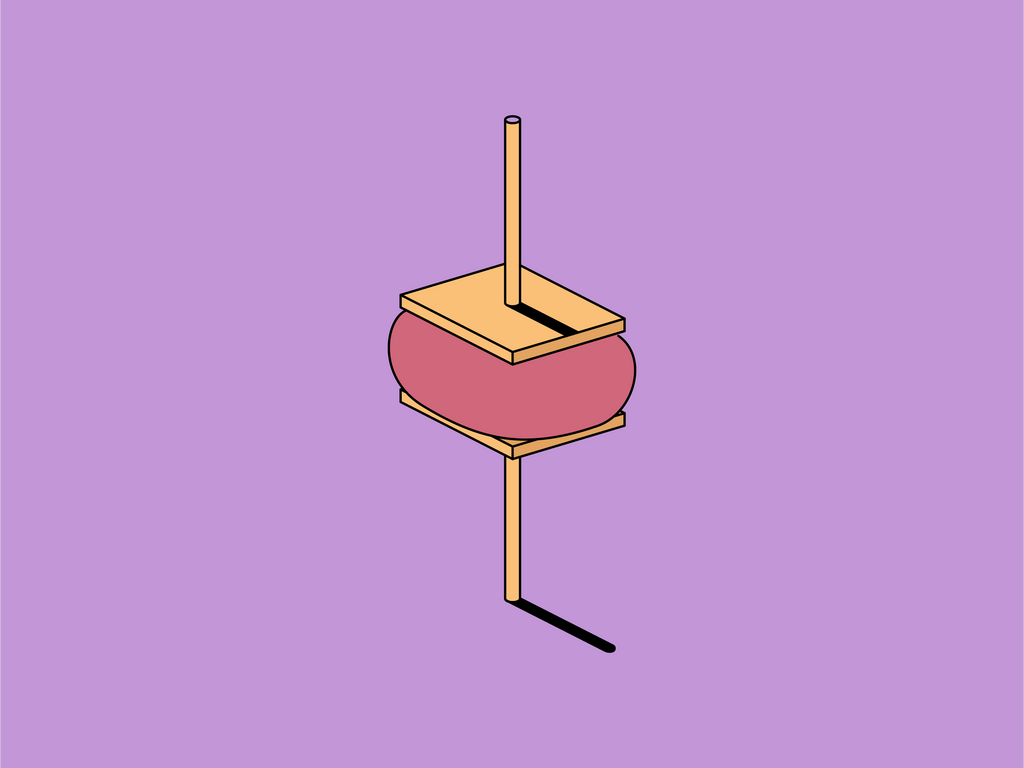I Was Eight Years Late to My First Mammogram
- Share this article Copy to clipboard

I lay in my hospital robe, opened at the front, as Dr. L. ran the handle for the ultrasound through cold gel on my breasts. This was my first mammogram, and now she wanted to take a closer look at a mass on my right side. I stared at the screen. In the ghostly grey webbing of normal breast tissue, there was a well defined small black hole.
I was eight years late for my mammogram. In 2016, the CDC recommended that women should begin mammogram screenings at age forty. My primary care physician, Dr. D, goes further. She advises her patients to have a baseline taken at age thirty-five, followed by annual screenings from age forty. From her first mention of a baseline, I resisted, largely because of television footage I saw years prior. Women, naked from the waist up being squeezed and pressed and pushed by a huge machine, their faces pained. Every year at my check up, Dr. D. reminded me of the importance of starting my mammograms. And each time, I listened and tucked the prescription into my purse, but ignored it.
This year was different. My check up with Dr. D. coincided with my 43rd birthday, the age my mother was when she passed from cancer. I felt a shift: I wanted to be grown up, I wanted to face my fears, I wouldn’t take my time for granted anymore. Empowered and trying to ignore my nagging nerves, I booked my mammogram appointment.
That morning, I arrived at the clinic early with caffeine jitters. After a chat about my medical history with Dr. L, I was shown to the changing area where I slipped into the gown and flip flops provided.
The mammogram technician explained how I should stand and hold my arm, and how my breast would sit on the plate of the machine while it closed over me.
“Will it hurt?” This was the third time I had asked that question in one morning. The receptionist, Dr. L., and now the technician all answered similarly.
“No,” she said, “you might just be uncomfortable.”
When I was ready, the machine started up. I felt the lid touch me, and waited for its painful grip, but it didn’t happen. The machine clicked and whirred, and after a series of pictures in different angles, it was over, and hadn’t even felt uncomfortable. I was sheepish that I had avoided it for so long as I walked to Dr. L.’s office for her reading of my images.
Within minutes, I was lying down having the ultrasound, staring at the mass on the screen next to me. I expected Dr. L. to explain that this black hole was normal, a harmless cyst, nothing to worry about.
“I need to do a core needle biopsy,” she said. My palms dampened, and goosebumps raised on my arms.
“Can you do it now?”
“We’ll book you in for Monday.” Dr. L. saw the question in my eyes. “Most biopsies come back negative.” She talked me through the procedure, and gave me a leaflet. All the while, I kept looking at the image on the screen.
I drove away on autopilot. My thoughts were rapid fire. I as ashamed at not having been screened before, and imagined how my mum must have felt when she was diagnosed with a brain tumor at exactly my age.
At home, I did what I always do when it comes to potentially stressful issues: I researched the worst case scenario. I Googled myriad possible outcomes and treatments. Despite no medical training, and knowing that my research amounted to minimally useful information, the stress lifted as I read. I pretended I was in the driver’s seat. And that’s why, in the early hours of the morning, I felt a wave of triumph when I found a photograph of a benign breast mass that closely matched the image of mine. Unscientific to the point of being ridiculous, but for some reason it calmed me.
After a weekend on my laptop, I was ready for my biopsy. As the Lidocaine kicked in, Dr. L. began. There was a lot of pressure as she inserted the guide, took three samples, and then placed a tiny titanium marker in me for future reference.
“Can you tell anything from the consistency of the tissue?” I asked, hoping for expedited information.
“No,” Dr. L. smiled, “but we got the sections we need.”
The call with my results came 48 hours later. The cells were determined to be normal tissue. I stood on my deck, faced the sunshine, and made a promise to myself. As someone fortunate enough to have access to excellent healthcare, I wouldn’t be skipping any more screenings — for any reason, especially not one as trivial as possible slight discomfort.
And what better way to honor my mother than to look after myself and my health?
How was your first mammogram experience? Have you ever put off healthcare that you should be prioritizing? Join the conversation in the comments below.
Jo is a freelance writer and MFA student who moved from her native England to Maplewood, NJ, and spends her free time working on her novel with her pit bull on her lap. Her work (short stories, poetry, interviews, reviews) has recently appeared in The Bangalore Review, Necessary Fiction, [PANK], Funny Pearls and Cathexis Northwest Press. Last year, Jo was a writer in residence at L'Atelier Writers in France. She can be found on Twitter.


